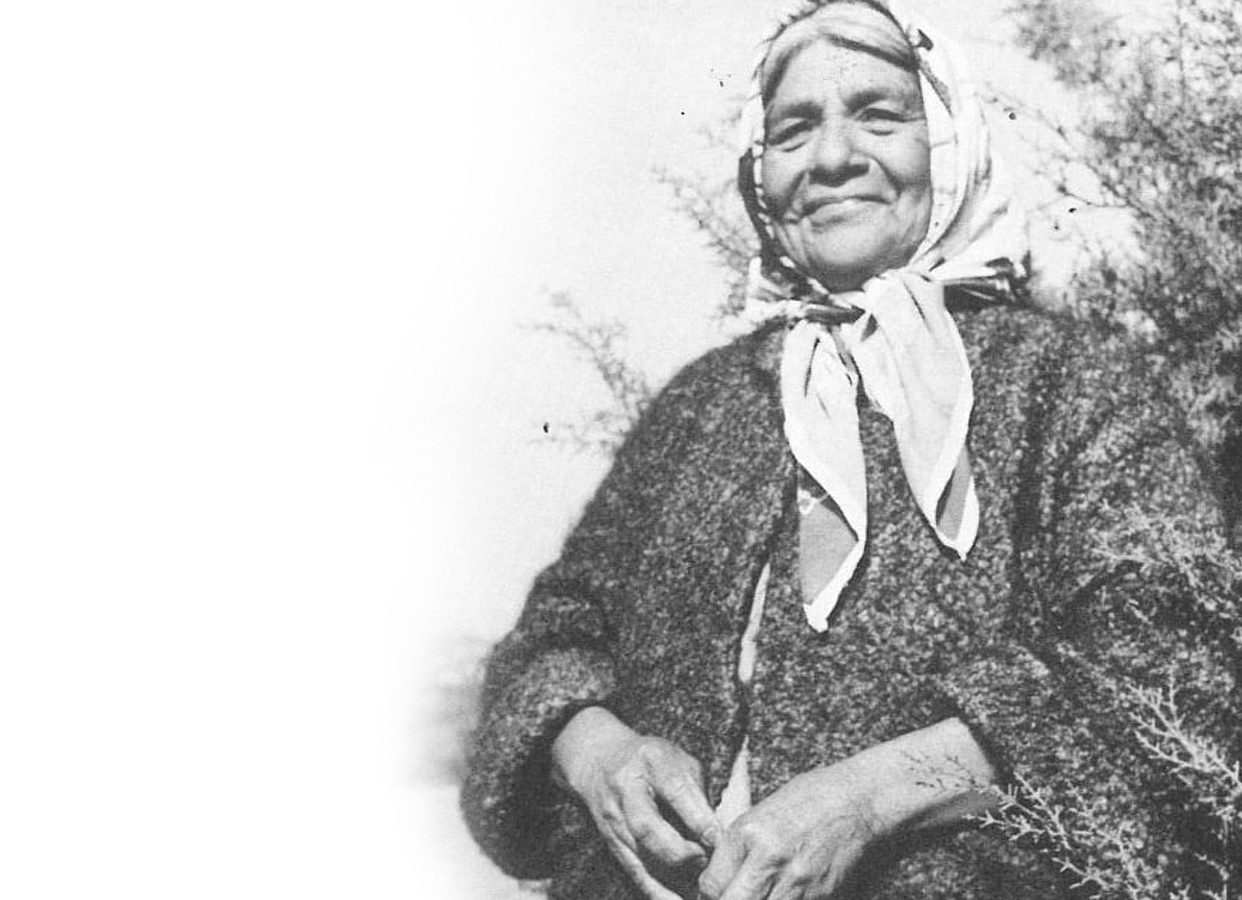In 1968, Florence Connolly Shipek, an anthropologist and professor of American Indian History, published a book called “Delfina Cuero: Her Autobiography-An Account of her Last Years and Her Ethnobotanic Contributions.” The purpose of this book was to ‘prove’ the American citizenship of Delfina.
Delfina Cuero was a Native American Kumeyaay Indian born in 1900 in the Xamca (Jamacha) area of San Diego, California. The traditional lands of the Kumeyaay people encompassed both the coastal and mountainous regions of San Diego, USA into Baja California. Mexico.
Delfina and her family migrated back and forth by foot following food that was naturally found in the area. Eventually forced into Mexico by settlers, and after an extended stay on the Mexican side of the new border, Delfina found herself on the ‘wrong’ side and was unable to return to the United States. Having no documentation of her American citizenship, she was not allowed to return.
Abandoned by her father at the age of 11, Delfina and her family struggled and her mother insisted Delfina marry since they ‘needed a man to provide food’ for the family. She married Sebastian Osun at an early age and had 5 children. According to Delfina, Sebastian was a good man.
“Everything was alright……He worked hard…..He was real good to me. He took care of the children.”
Despite extreme difficulties of being forced further and further south, strict gender roles were maintained. The women gathered greens, seeds, fruit and nuts while the men hunted and gathered honey from bees. Unfortunately, Sebastian died unexpectedly and Delfina was forced to abandon her traditional Indian ways. She and her children were starving and she faced the unimaginable decision to sell her oldest son.
“I finally had to sell Aureliano to a Mexican to get food”.
Over the next few years, Delfina lived with several men but became essentially a slave in each household.
“I tried to live with several men, each one said he would take care of me but each time it was always the same. I did all the cooking, washing, ironing, and everything, all the work I had always done but it wasn’t enough. I had to cut firewood and stack it. I had to clear land and cut fence posts. I had to work like a man as well as the house and garden work, hard, heavy work. If I didn’t do enough to suit him, he would beat me.”
After years of abuse at the hands of the men who promised to support her, Delfina began supporting herself by doing the laundry and ironing for the ladies on the ranches in the area. She was never interested in making baskets or ollas (ceramic jars) like her mother and grandmother, but finding and gathering plants and herbs fascinated her. She became know as the ‘herb-woman’, concocting herbal remedies for all types of ailments.
‘Pullaay’ (Antirrhinum nuttallianum (Snapdragon))….”We made tea for colds by gathering purple flowers. Boiled it and added a little oil, now olive oil, and drink.”
Her autobiography contains the names and uses of nearly 70 plants. This information was gathered on one single visit to two locations Delfina made with Shipek to identify useful plants.
Using the descriptions Delfina provided of the land, native plants, and her own activities in California, Shipek’s book eventually proved beyond a doubt that Delfina belonged in the United States and she was able to return in 1967 just before the book’s official publication.
Delfina Cuero lived in Southern California until her death in 1972.
Written by Julie St Jean





